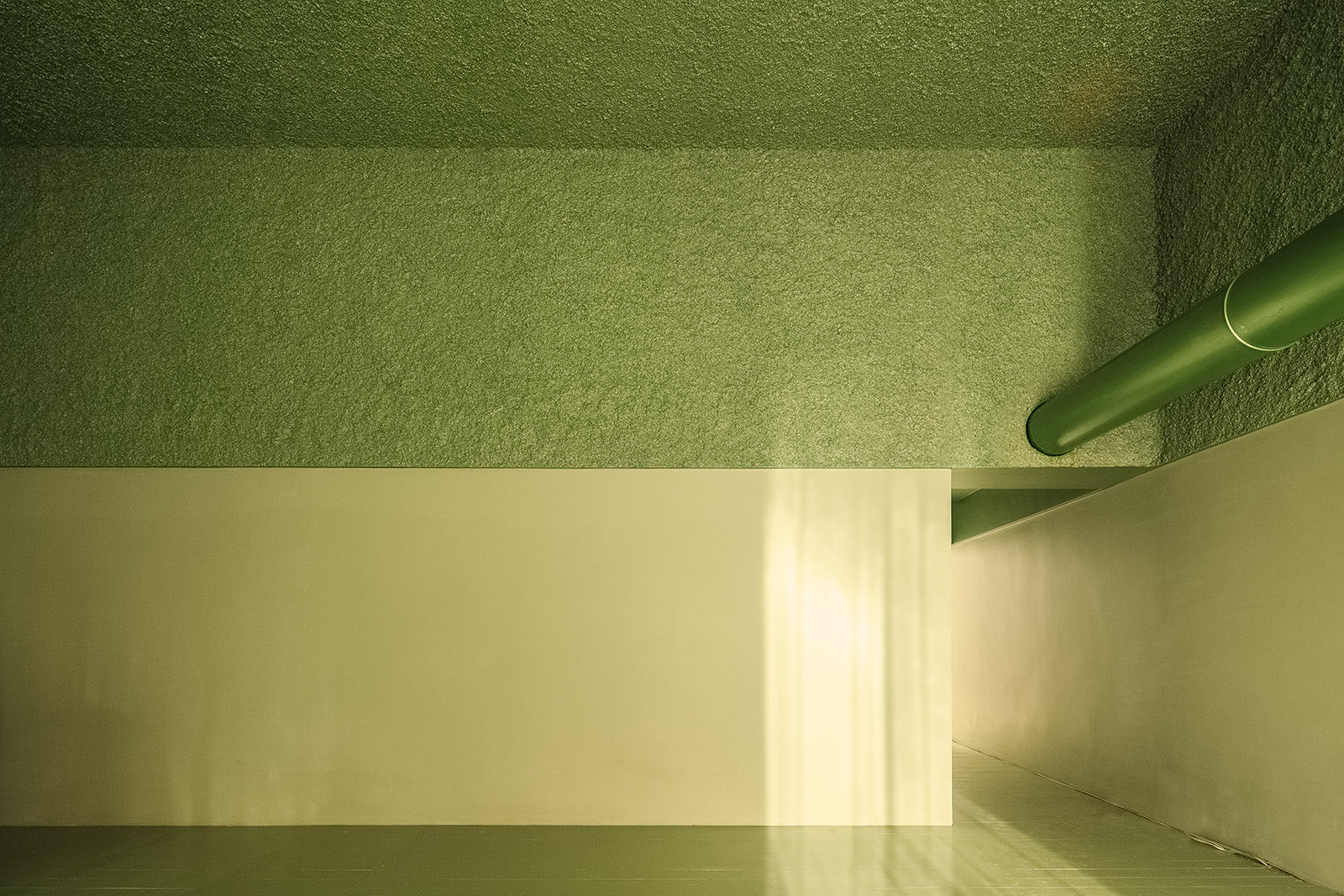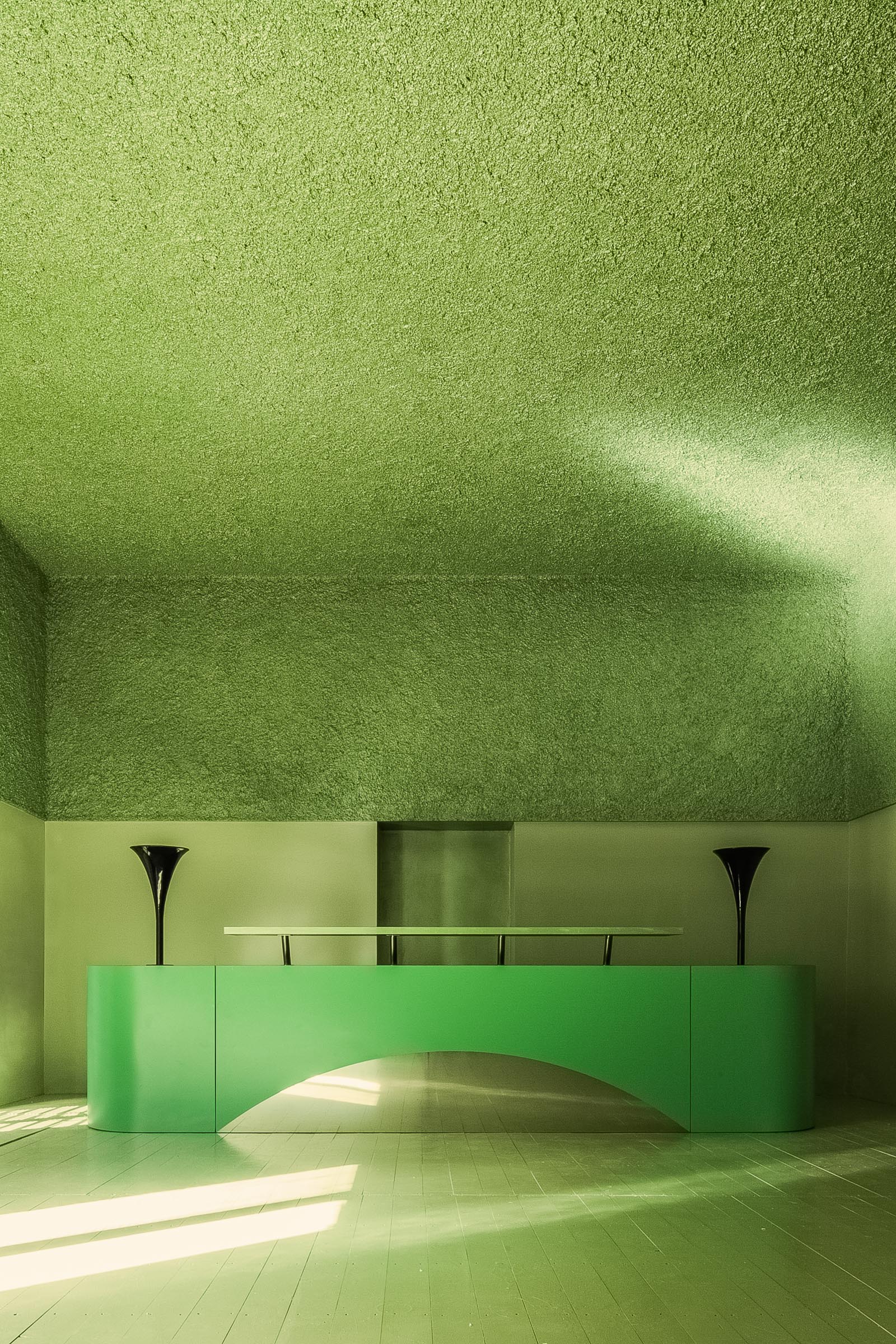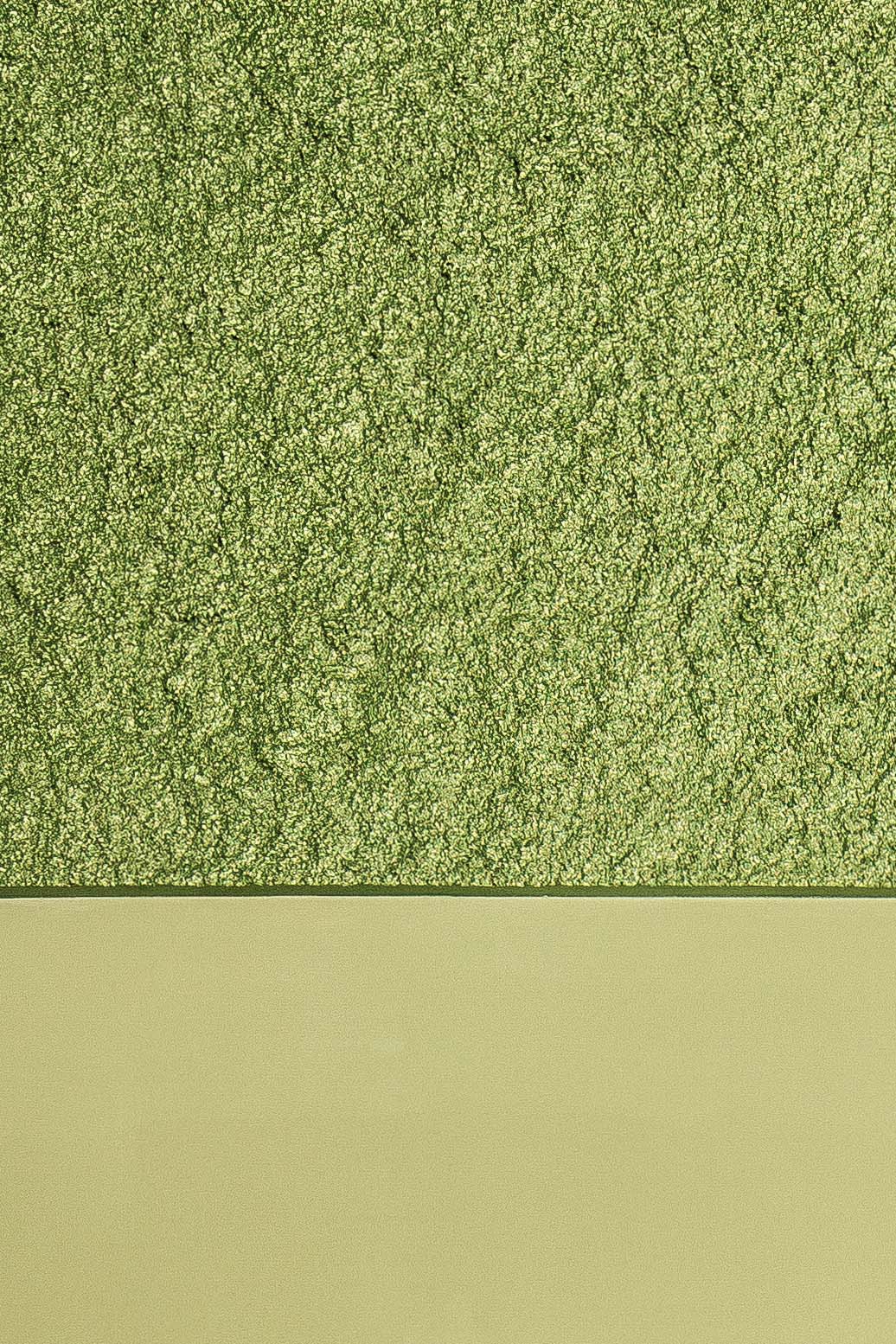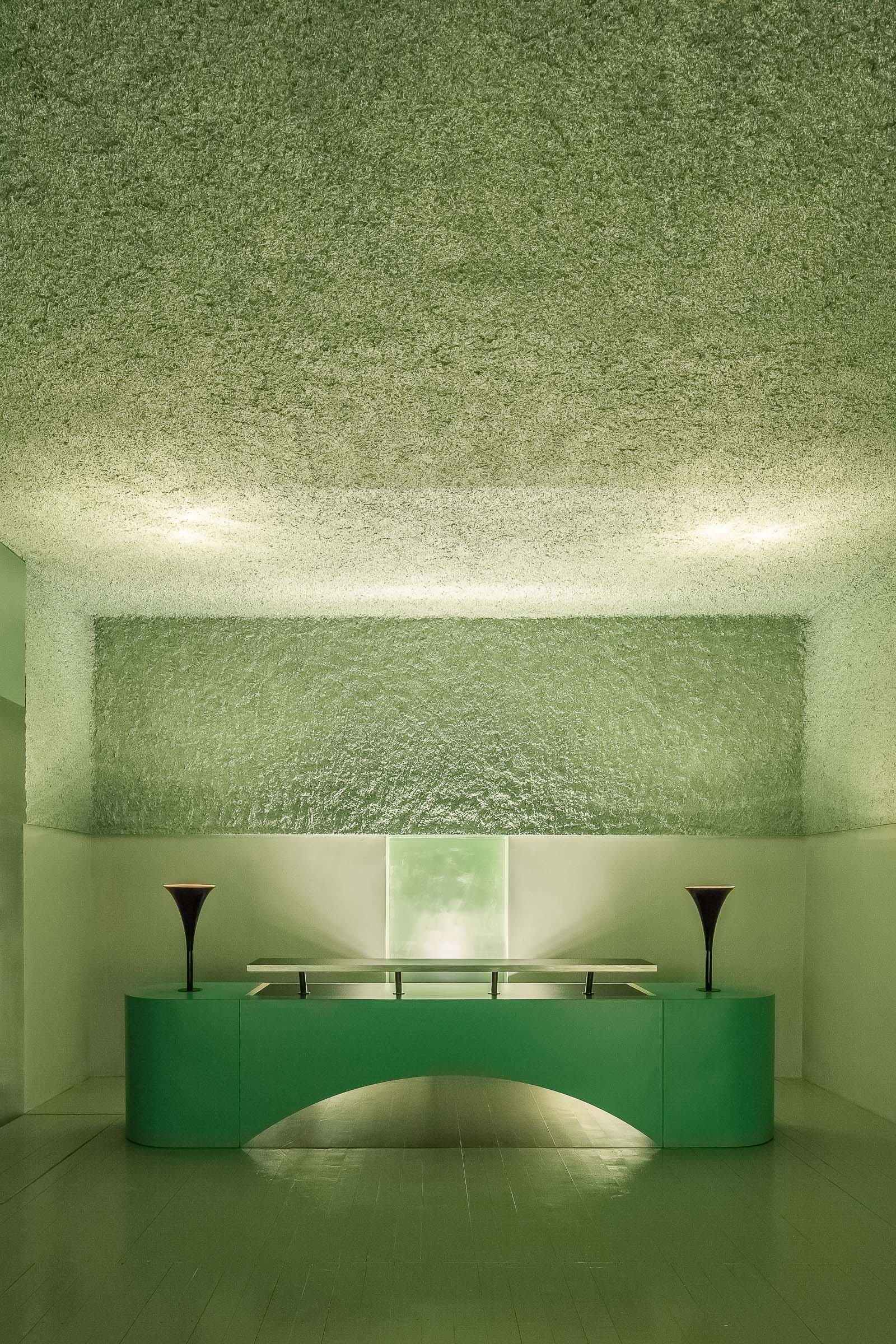

Interpretation
Antonino Cardillo
He must pronounce a curse on love, he must renounce all joys of love, before he masters the magic, a ring to forge from the gold.
— Richard Wagner, Das Rheingold (1869)
Crepuscular Green is an interior refurbishment of an art gallery. The use of colour and texture is inspired by the opening scene of Richard Wagner’s Das Rheingold, which describes a greenish dawn as seen from the depths of the river. This work was made on a low budget with one builder. The poverty of means applied here relates to the idea of architecture being a faculty to transcend the ordinary. Like a green golden grotto, a rusticated vault envelopes the upper part of the room, rendering a trilithon schema on the backdrop. Ahead, a rounded altar features a mirror arched bridge and a suspended slab above. On either side, two black flutes emit diffused lighting. Everything is painted in shades of green. Words of the space relate to each other a cohesive narrative, which aims to unfold the imagination of the inhabitants.
Data
- Time: Design (Feb – Mar 2014); Construction (Mar – Apr 2014); Photography (Apr 2014); Text drafting (Nov 2014 – Feb 2015)
- Place: Mondrian Suite, Via dei Piceni, 41, Rome, Italy
- Area: 40 m² (single storey)
- Typology: Art gallery





Credits
- Architecture, construction management: Antonino Cardillo
- Client: Mondrian Suite (director: Vincenzo Petrone alias Klaus Mondrian)
- Constructor: Grigoriu Cicau
- Furniture making: Stefano Coacci
- Lamp making: Armand Darot
- Bar counter design: Antonino Cardillo
- Photography, text: Antonino Cardillo
- Thanks to Paolo Bedetti